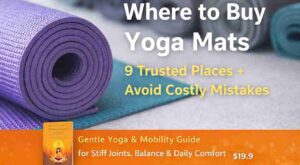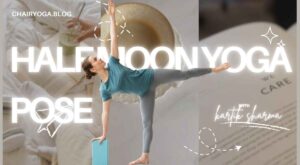Discover clinical research‑supported Chair Yoga for Vertigo in older adults. Gentle, safe, and effective techniques to improve vestibular health and reduce dizziness. Vertigo is more than just feeling dizzy—it’s the false sensation that either you or your surroundings are spinning. For seniors, it’s a particularly dangerous symptom. It may stem from inner ear conditions like benign paroxysmal positional vertigo (BPPV), vestibular neuritis, or even age-related degeneration of the vestibular system. Nearly 1 in 3 adults over the age of 65 falls each year, and vertigo is a significant contributor.
"Dizziness and balance issues in older adults are strongly associated with fall risk and reduced quality of life." (NIH - National Library of Medicine)
Table of Contents
7 Science-Backed poses for Chair Yoga for Vertigo Relief
🪑 Related Chair Yoga Posts You’ll Love
- 🔗 Free Printable Chair Yoga Exercises for Seniors
- 🔗 Free Chair Yoga for Weight Loss: Simple, Free, Effective Routines
- 🔗 Chair Yoga for Brain Health: 5 Gentle Poses to Boost Memory & Focus
- 🔗 21-Day Chair Yoga Challenge for Seniors – Free Printable Calendar
- 🔗 50+ Essential Chair Yoga Poses for Office Workers
- 🔗 Chair Yoga Challenge: A 21-Day Wellness Journey for Every Body
- 🔗 Chair Yoga Workout for Seniors: Stay Active, Pain-Free & Energized
- 🔗 Chair Yoga for Arthritis: 7 Gentle Moves to Ease Pain & Stiffness
These poses are chosen based on their ability to stimulate balance systems gently and safely:
1. Seated Mountain Pose (Tadasana)
- Sit upright, feet flat, spine tall.
- Hands on thighs or knees.
- Deep breathing with awareness.
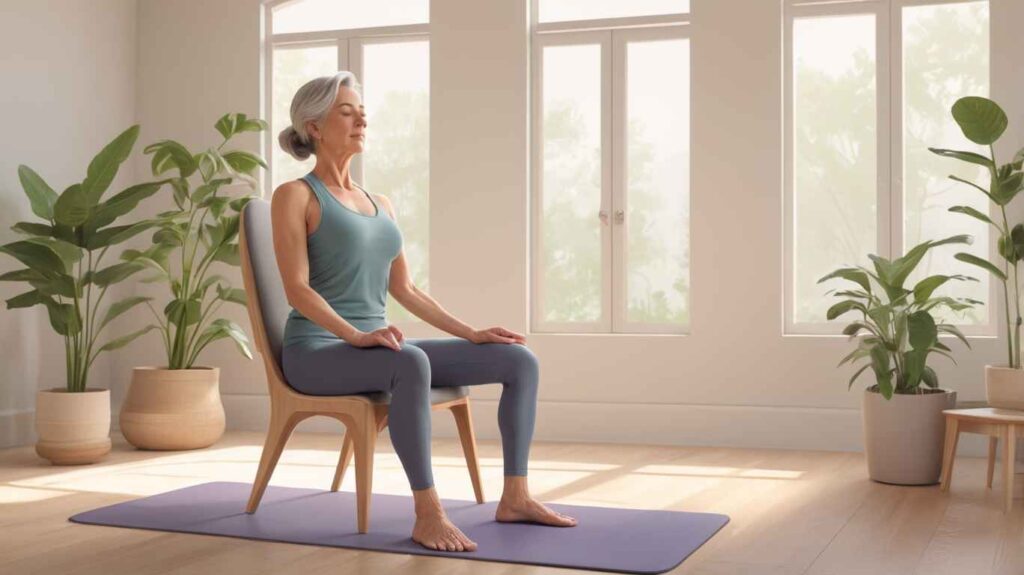
Benefit: Aligns spine, improves proprioception, and sets a stable foundation for balance training.
2. Neck Rolls (Slow and Gentle)
- Drop chin slightly.
- Roll head side to side.
- Stop if spinning occurs.
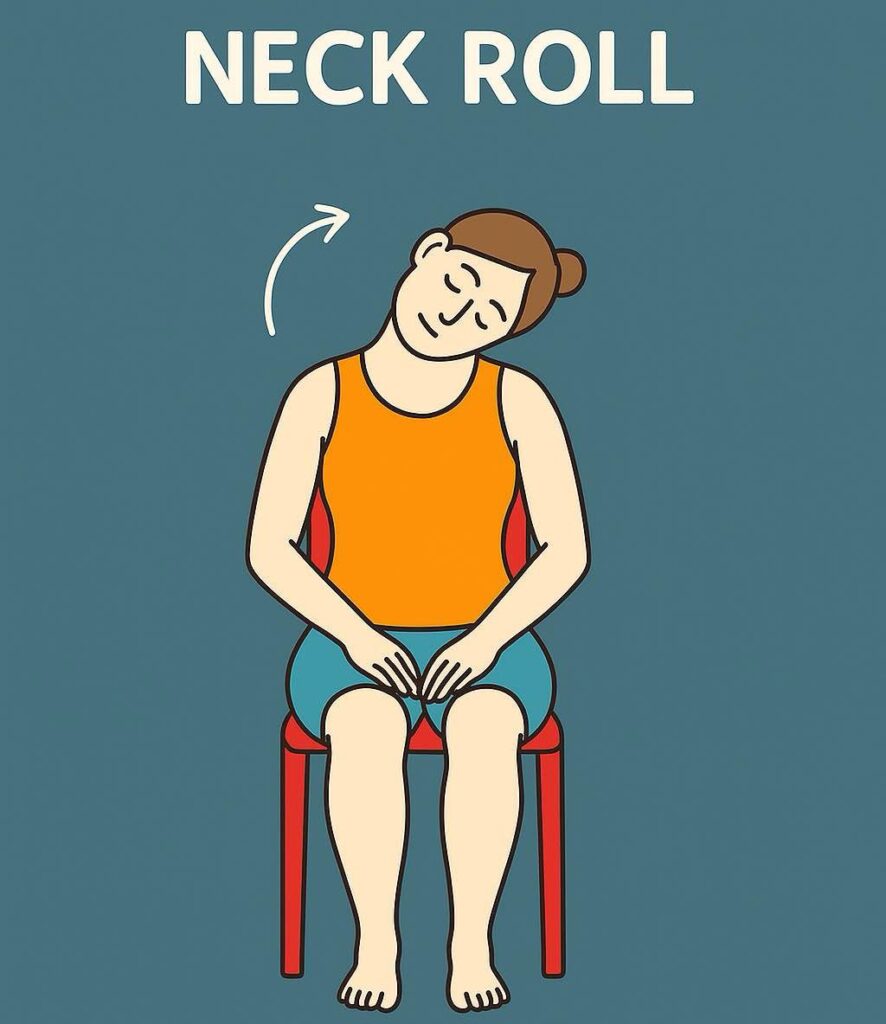
Benefit: Stimulates neck proprioceptors and vestibular connections; improves range of motion.
3. Seated Spinal Twist
- Turn torso slowly to one side.
- Hold chair for support.
- Breathe and switch sides.
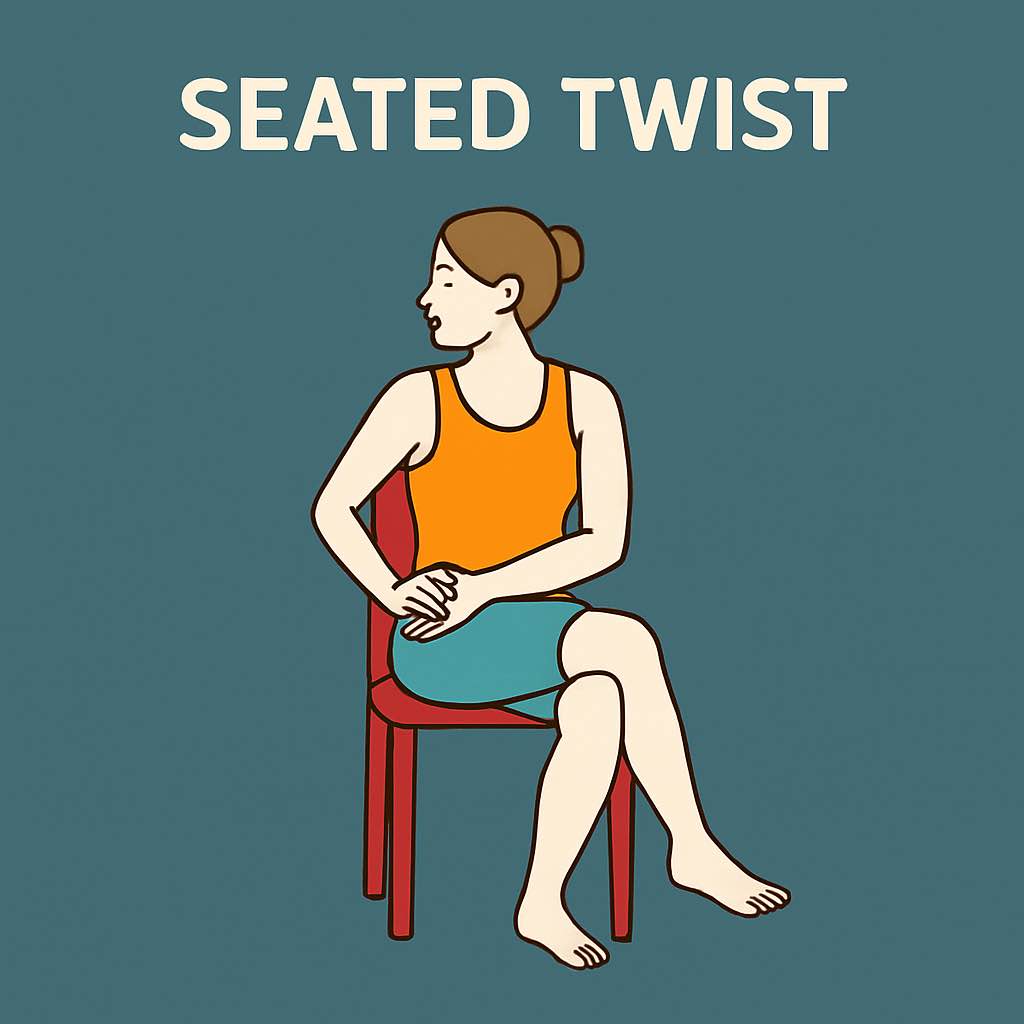
Benefit: Enhances spinal flexibility and inner-ear coordination.
4. Forward Fold from Chair
- Inhale to lift arms.
- Exhale to hinge forward, reaching toward feet.
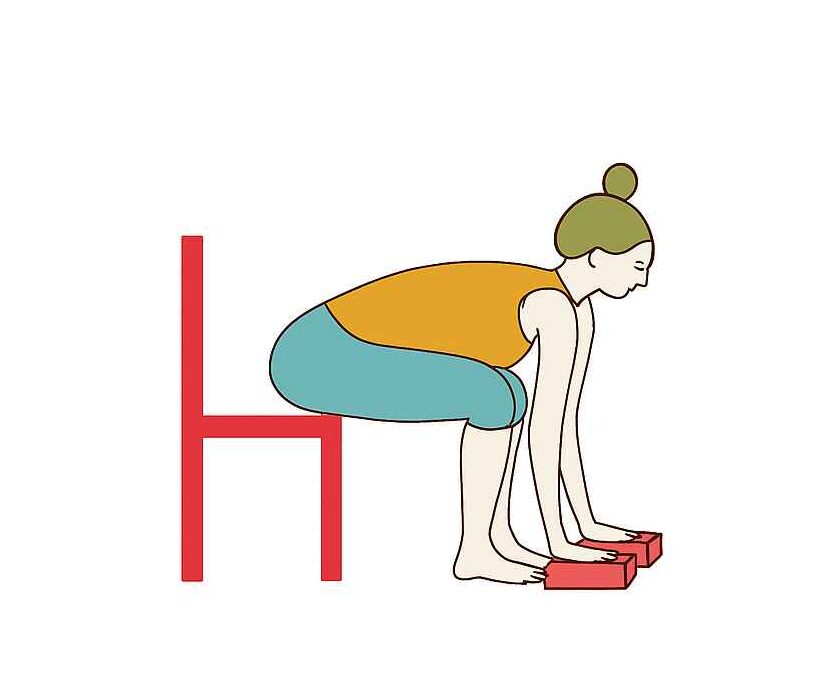
Benefit: Encourages blood flow and eases tension in head and neck.
5. Eye-Focus Tracking (Drishti Practice)
- Hold thumb 12″ from face.
- Move it left–right, up–down.
- Eyes follow, head stays still.
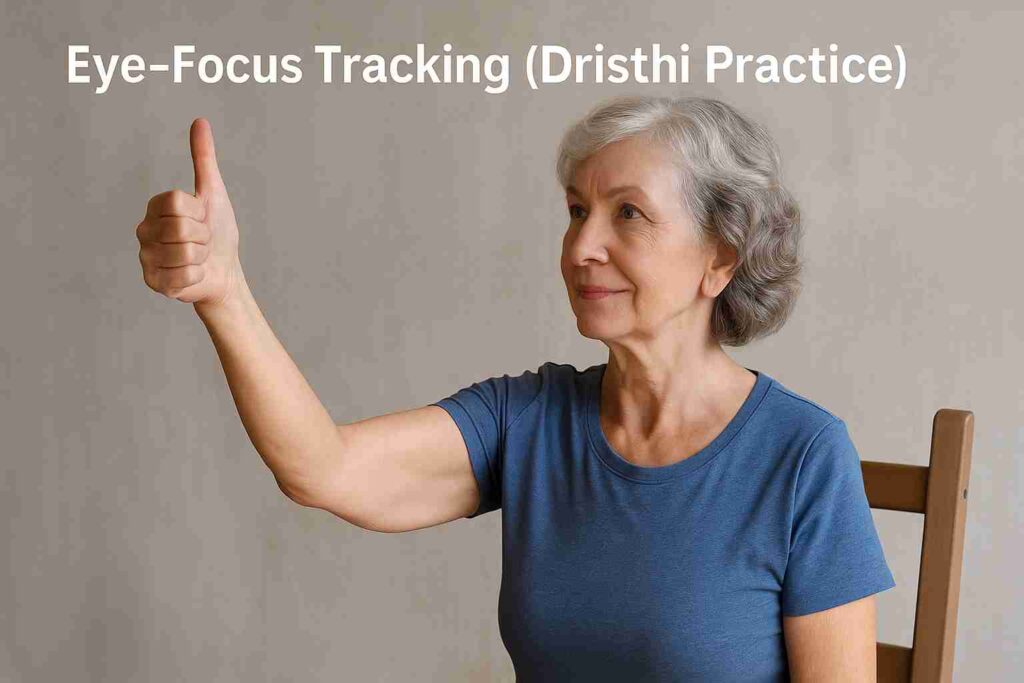
Benefit: Trains VOR, stabilizes vision during movement, mimicking vestibular rehab techniques.
6. Leg Lifts with Arm Raises
- Lift right leg and left arm, hold for 3 seconds.
- Alternate sides.
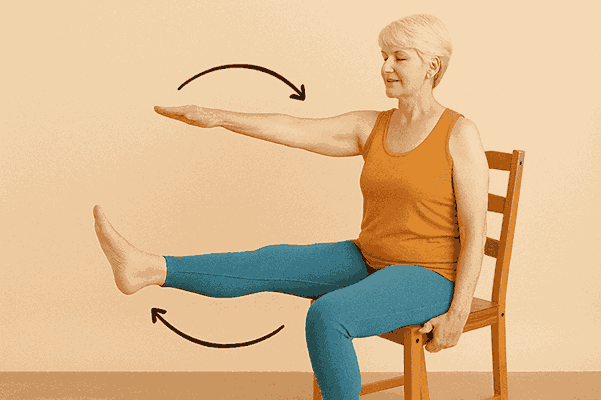
Benefit: Challenges balance gently, improves coordination.
7. Alternate Nostril Breathing
- Inhale through left nostril, exhale through right.
- Repeat on opposite side.
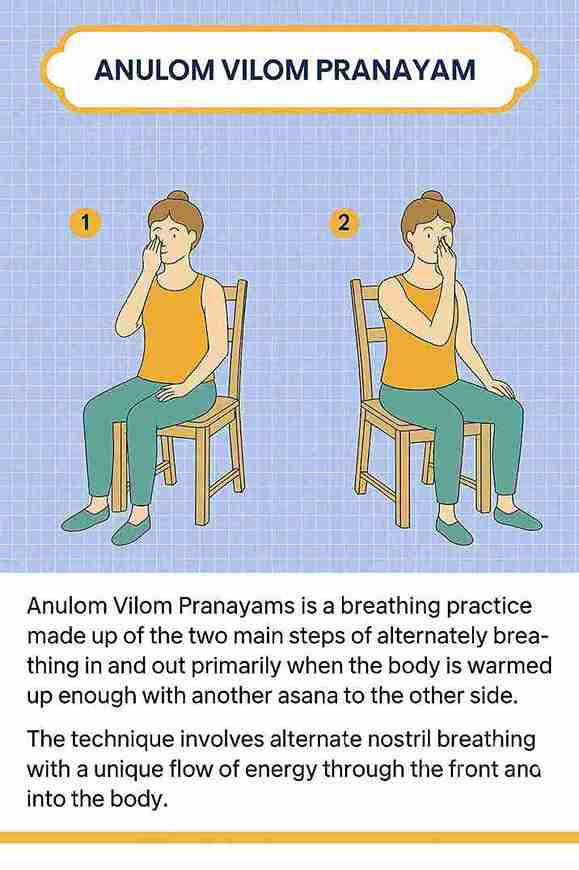
Benefit: Calms nervous system, supports parasympathetic activation, which reduces dizziness and stress.
The Role of Chair Yoga in Managing Vertigo
- Where to Buy Yoga Mats: 9 Trusted Places + Avoid These Costly Mistakes
- 9 Best Yoga Poses for Back Pain (Doctor-Backed Relief + Avoid These Mistakes) | Free PDF
- 7 Best Chair Yoga Apps in 2025 (Safe Choice for Seniors + Avoid Bad Apps) | Free PDF
- Half Moon Yoga Pose: 7 Powerful Benefits + Avoid These Common Mistakes
- 28 Day Chair Workout Plan (Safe & Free) – Build Strength Without Pain or Equipment
Chair yoga adapts traditional yoga movements to a seated position, making it safe for people with limited mobility or balance concerns. Research has found yoga—especially slow, mindful movement combined with breath—can support the vestibular system (which controls balance) and reduce the intensity and frequency of vertigo episodes.
"Yoga practitioners exhibited better vestibular evoked myogenic potentials (cVEMP), suggesting enhanced vestibular function compared to non-practitioners." (SpringerLink)
Another study compared yoga poses to traditional vestibular rehabilitation therapy and found both effective in managing dizziness, though the yoga group reported greater subjective comfort.
"Yoga and gaze-stabilization exercises both led to significant reductions in dizziness, with yoga showing better compliance and symptom control in some patients." (PubMed)
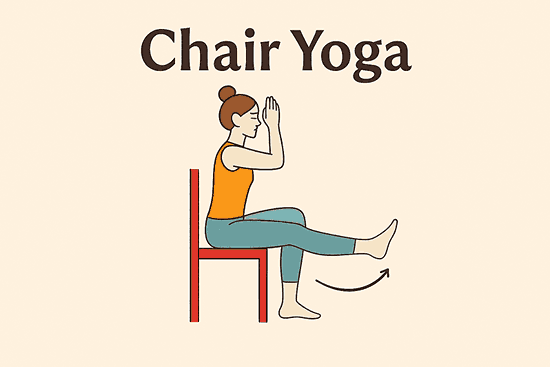
How Chair Yoga Helps Vertigo: The Science
Improves Vestibular-Spinal Reflex (VSR)
Your body uses VSR to maintain upright posture. Gentle seated movements can retrain this reflex.
"Chair yoga programs were associated with improvements in dynamic balance and gait speed among older adults, enhancing overall mobility." (PubMed)
Stimulates Vestibular-Ocular Reflex (VOR)
This reflex helps stabilize your vision during movement. Specific eye-tracking movements in yoga mimic vestibular therapy exercises.
"Eye and head coordination exercises, similar to yogic drishti practices, can improve gaze stability and reduce dizziness episodes." (Vestibular.org)
Reduces Anxiety and Boosts Confidence
The fear of falling can worsen dizziness. Chair yoga has been found to calm the nervous system and improve mental clarity.
"Older adults practicing chair yoga reported reduced anxiety and greater self-confidence in movement, even with a history of falls." (PMC - NIH)
Sample Routine for Chair Yoga for Vertigo (15 Minutes)
| Exercise | Duration |
|---|---|
| Seated Mountain | 2 minutes |
| Neck Rolls | 1 minute |
| Seated Twist | 2 minutes |
| Forward Fold | 2 minutes |
| Eye-Focus Exercise | 2 minutes |
| Leg & Arm Coordination | 3 minutes |
| Breathing Practice | 3 minutes |
Repeat 3–5 times weekly. Use a sturdy chair, stay hydrated, and stop if dizziness worsens.
Additional Supportive Tips
- Stay hydrated. Even mild dehydration worsens vertigo.
- Get enough sleep. Poor sleep reduces neural stability.
- Avoid sudden head movements. Slow is safer.
- Limit salt and caffeine. Especially if your vertigo stems from inner-ear fluid imbalance (e.g., Meniere’s disease).
Free Printable for chair yoga for vertigo
Final Thoughts for Chair Yoga for Vertigo
Chair yoga offers a gentle, science-supported way for seniors to combat vertigo, regain balance, and move with confidence. Unlike medication, it empowers the body’s own reflexes to stabilize vision, posture, and gait—all from the safety of a chair.
Start slow, stay consistent, and you may feel your world stop spinning—one breath at a time.
Would you like this article turned into a printable PDF or Pinterest image with a senior-friendly layout?



